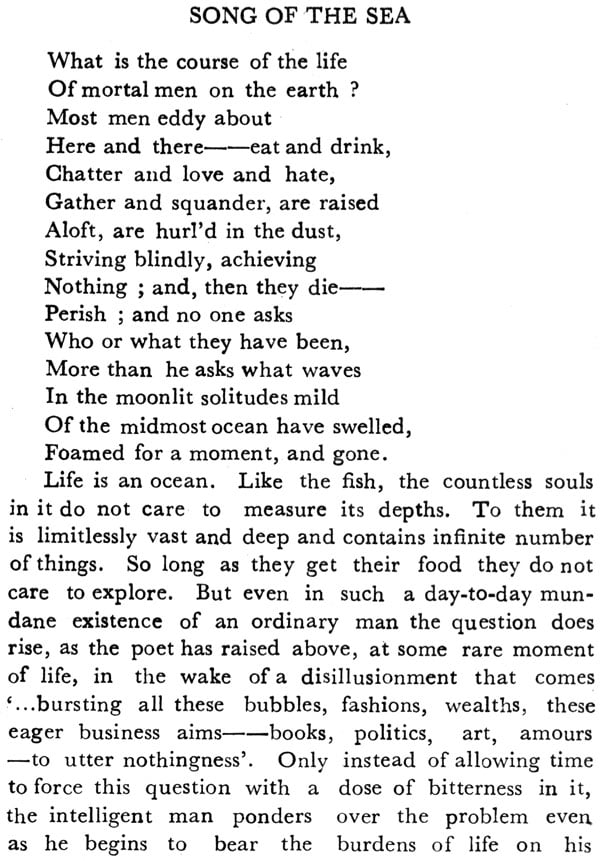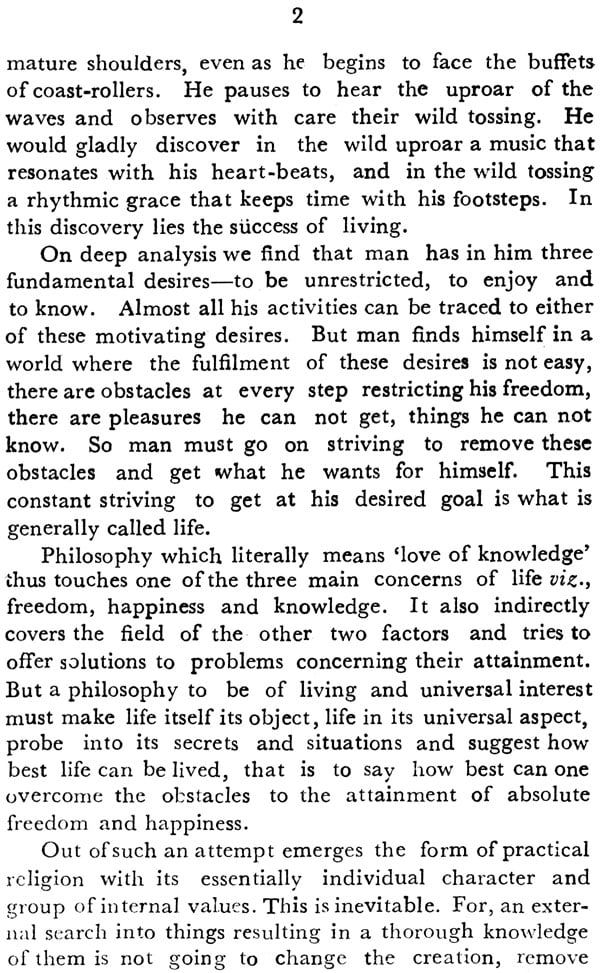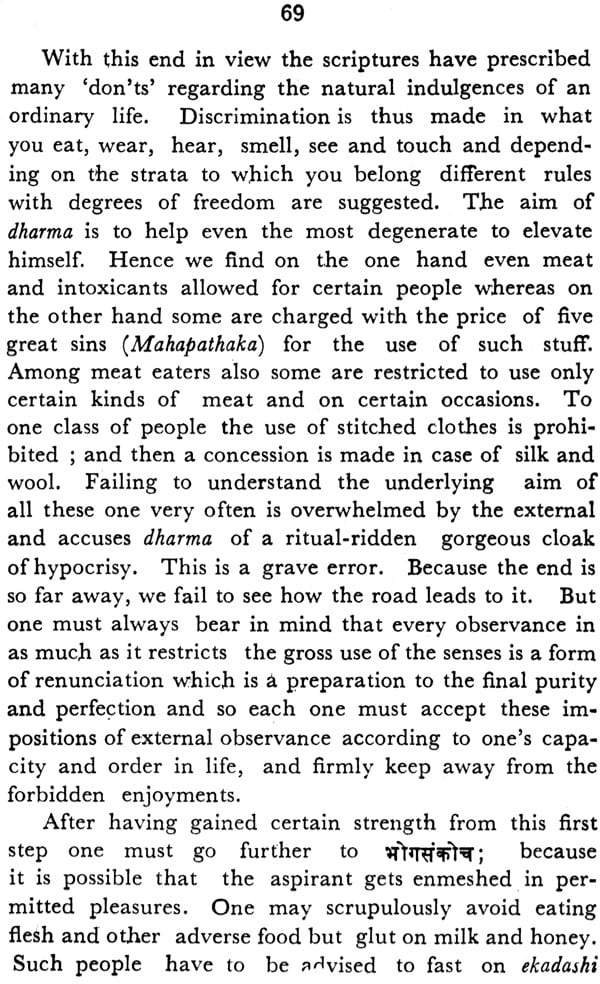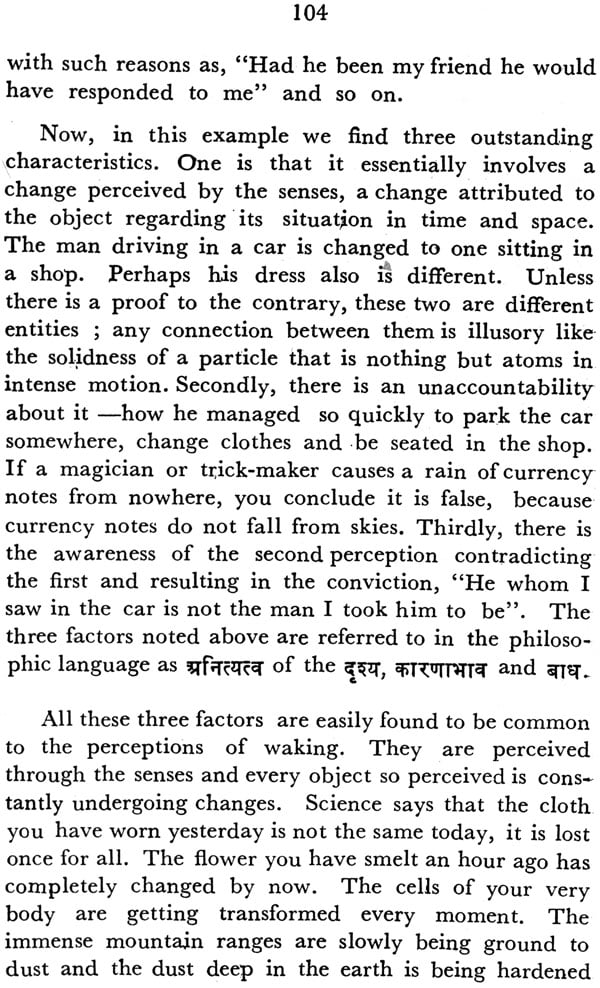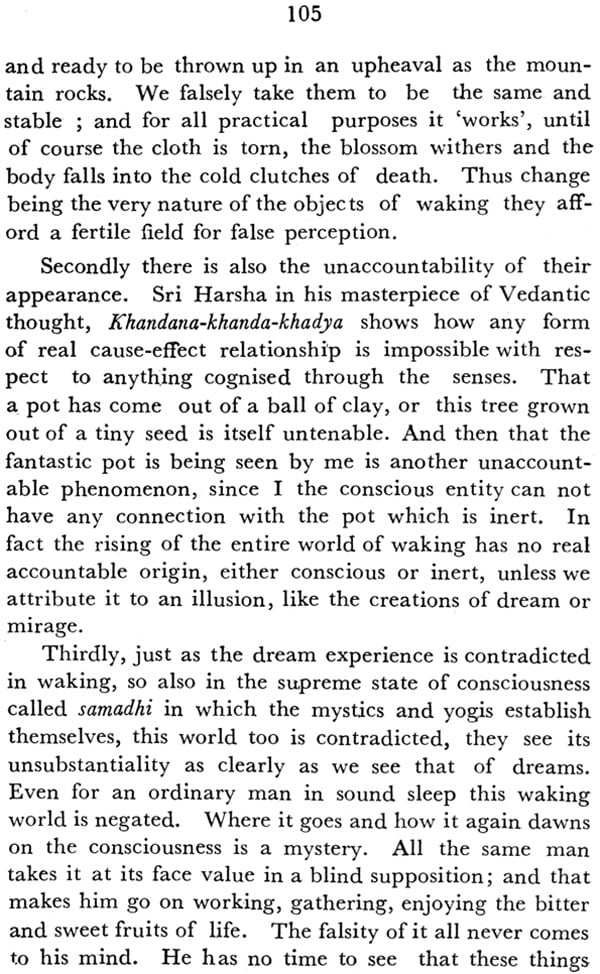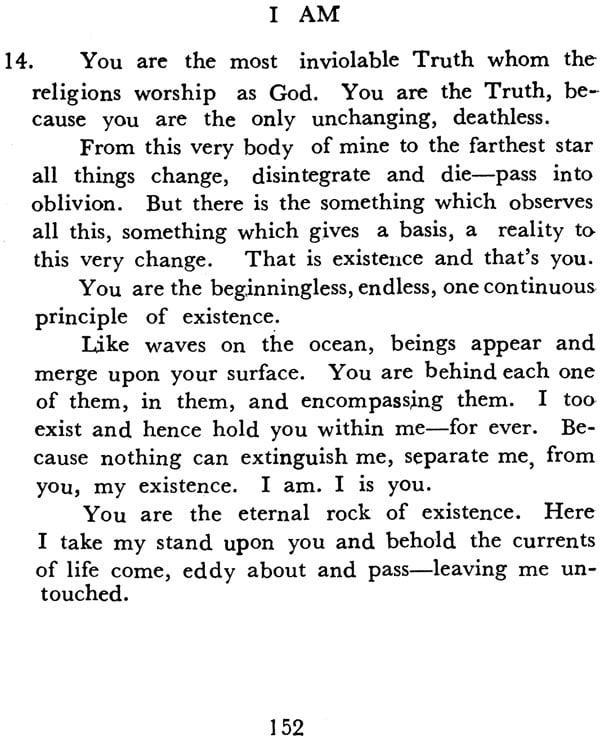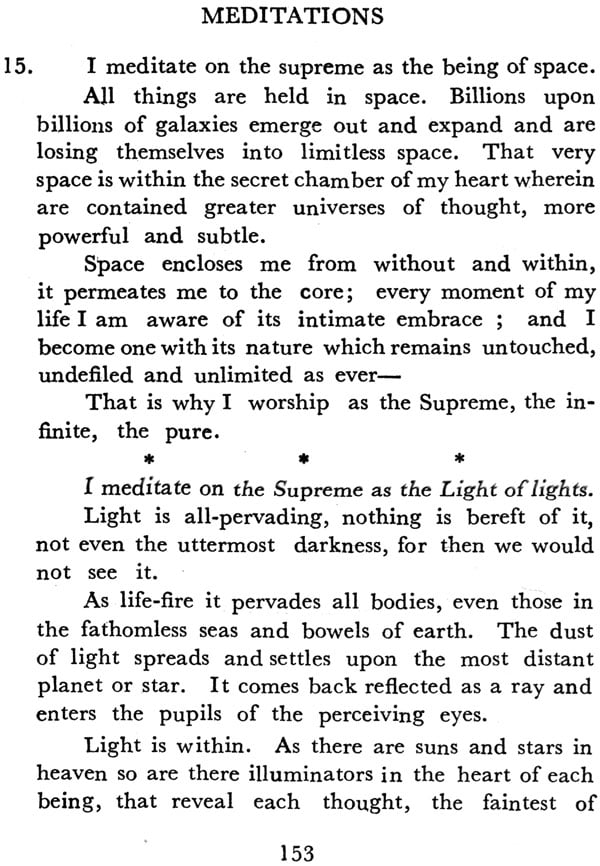
Jivana-Yajna: A Concept of Life
Book Specification
| Item Code: | IDJ137 |
| Author: | Swami Maheshananda Giri |
| Publisher: | Bharatiya Sanskriti Samaj |
| Language: | English |
| Edition: | 1985 |
| Pages: | 155 |
| Cover: | Paperback |
| Other Details | 6.8" X 4.7" |
| Weight | 170 gm |
Book Description
Preface
Twentieth century has made changes in the very structure of the inhabitants of this earth that were unthinkable only half a century earlier. The physical has not been balanced even by the sociological and the psychological in magnitude, much less by the religious and the spiritual. This failure is the real crisis of humanity. The golden age is one that strikes a harmonious chord in all its aspects. Thus the present century has failed to keep up the promise.
The hope, says a well-known Greek proverb, is the sustainance of the struggling mortals. We hope that the twenty-first century will bring about this harmony. The last part of the twentieth century has been struggling with the problem and we feel the consciousness to face and solve has been the most important guiding line of our thinkers, however great may have been the failure. But once one realizes the immense magnitude of the problem one cannot feel disheartened by either the failure, or the amount of work done to bridge the gap. Continents have town. The computers of the seventh generation have become better equipped to deal with everyday problems than mere human beings belonging to the race of white collars. The moon is not merely within the grasp, but is habitable. The solar system has been practically toured like a Colombus. It is no joke to consolidate the gains. And still the technology and the physical sciences are not exhausted, nor sleeping on their laurels but leaping everyday in the new horizons with a thud that trembles the human race as once the Volcano did. But humanity is also rising up like a colossus lifting its head like a seal from the surface of the sea. And the next century may see once again the rise of the humanities which may dwarf the gains of the sciences in the twentieth century. This work may help to bring the consciousness to the forefront of this march.
The struggle for a goal is the definition of life. Mere flow is inanimate action. A goal is not and can never be fixed by an external agency. Exteriorly determined goal is no goal. Hence an action done under duress or fear may be good but certainly not moral, much less religious, and is definitely unspiritual. The sciences continuously strive after the extraneous determination or verification. Following in its trail and establishing itself as a branch of science, psychology and ethics, and even religions are trying to establish their veracity on the basis of an objective external coordinate, failing which they fight shy of asserting their real intentions. The objective verification of subjective coordinate is the new line opening up, and perhaps in the next century we may see the broadening of science on this new foundation. Just as too much emphasis on the subjective and neglect of the objective was the bane of medieval philosophers, near total obliteration of the subject and the subjective verification has been the bane of the modern scientists. Vedantic vies of life is a balanced one emphasizing the subjective and objective equally. Since the goal and its coordinates is the subjective side, science as it is understood today is incapable of guiding the human spirit in this region. Vedanta postulates that subject and object come into being simultaneously and are equally authoritative in guiding the human spirit in its journey. One gives the momentum and the other provides the wheel. Subject without the object is lame, and the object without the subject is blind. Thus, the twenty-first century is bound to be Vedantic if it has to survive.
Hinduism in general and Vedanta is particular is basically universal in its approach. It has not kept the blinders of race, religion, culture, nation etc. on while traversing the path of the spirit. All the varieties of human capacities are taken into consideration, thus it has something for each aspirant. It is all inclusive. It excludes none as a misfit in its Catholicism. From the barbarian Huns to the Paramahamsa like Suka, it has a place in its wings. This naturally has made Hinduism full of apparent contradiction. There are values which become disvalues at a certain stage of development. Hinduism has been called a federation of religions, rather than a religion. This is really a tribute rather than disparaging. But Hinduism ha a unity, just as a federation also has a unity. It is the unity of the fundamental rights and duties, and a sense of dedication of each federating unit to the development of the federation. Similarly Hinduism gives each federal unit absolute independence in its own affairs, yet each unit has to give the same right to the other units and has a duty to agree to communicate with each federal unit its fundamental principle and be ready to discuss its ethical, scientific and spiritual aspect on a rational basis with a free attitude of give and take. Criticism to a Hindu is not necessarily destructive for he holds that the greater truths can be attained through harmonious disputations. Thus Buddhism, Jainism may be heretical sects, but sects of Hinduism all the same Jainism could never have made so many vegetarians with all its conversions without becoming a part of Hinduism. Buddha is worshipped to this day by every Hindu not only as an incarnation, but as a part of every day samkalpa. Thus contributions from each branch have influenced every other one. Mohammedans and Christians never could become a part for they had from the beginning imbibed the culture of intolerance, non-communication and exclusive rights with no duties. Some of the Hindu giants tried to bring a harmony but the Muslim masses never cooperated. The fault lies not with the followers, but with the founders of these sectarian churches. If in future humanity has to exist, it must out of necessity give up these sectarian and autocratic views and build themselves into a universal church which in effect will only be an enlarged Hinduism based on the precepts of Vedanta according to the genius of Sri Sankara.
Hinduism brigs religions from a social phenomenon to an individual noumena. Each individual is a complete unit, and religion needs no other apparatus than the body-mind complex endowed by God. Reform thus is not a movement, but a ripple, for ripples make up the wave. This ripple making is called Yajna in the terse Vedic language. Hinduism is a picturesque religion, full of symbolical representation. Each human action is a symbol. Ideal life is the symbolized ideal action. Yajna or sacrifice is the ideal symbol. Whatever is done according to the dictates of the scriptures is a yajna. A well ordered moral living aimed at realizing Siva as one's innermost reality is yajna. Veda has often prescribed this symbol and given its details. Chhandogyopanishad, Taittiriyaranyakopanishad etc are the foundations on which later the Bhagavad gita has built the monumental structure of Jivan Yajna. Most of the Puranas alongwith the Mahabharata gave the flesh and blood to this structure and through stories presented as an animated sacrifice. Shibi sacrifices his own body to a vulture, Harishchandra sacrifices his son, Rohit, to an angry rishi, Rantideva sacrifices his whole family to a chandala and so on and so forth.
The present book deals mainly with the mores or norms that must guide the one who wants to become a yajamana in the sacrifice. Truth, non-violence etc. are concepts on which the future religion of the twenty-first century must put up its foundations. Unfortunately these are the very things that are often neglected. The present generation has reservations about them because in their or anthropology, they do not find any evidence of their being in the normal make-up of humanity. The man of action often finds them obstructing his personal progress as well as the progress of the institutions. But the reason is that truth or non-violence ha been worked out by the great thinkers into the fully developed stage to their farthest limits and deepest significance. In these rarefied stratospheres they become really impractical, unapproachable and unattainable. But this is true of any value whatsoever. But in the beginning stages they are not so. The fact is that individual virtue is really impossible to perfect in one's life without catering to others equally well. Hough in the highest stage each is derivable from the other, but in practice each is to be practiced imperfectly in collaboration with the other and thus each will help to attain a harmony when all of them will be perfected simultaneously. Of course one or the other virtue due to one's aptitude attracts one more than the others. And in the final leap that particular virtue will be sucking the aspirant into the highest stage, and this will become the reason for that wise person to recommend that particular virtue more than the others. Thus Sankar will emphasise loving wisdom Buddha compassionate middle path, Mahavira austerity, Krishna passionless action, Rama dedicated duty, Mohammed God-dedicated brotherhood, Christ loving charity and so on and so forth. But once a detailed analysis is done the messages converge rather than diverge. Religion or ethics can never be studied on the normal human beings, but on its best samples. Just as the characteristics of gold or silver are studied on the most refined molecule of gold rather than the mineral gold or silver, similarly the human quality has to be studied by studying the persons who have become pure human, losing their passionate animal life far behind. It is then that we will realize the norms of the human society. The present book is a projection on these values. In the appendix certain meditations are given for the aspirant to dive into the sacrifice. One must understand the symbol of life to comprehend the other symbols of the sacrifice.
Bharatiya Sanskriti Samaj has taken upon itself the burden of publishing this work, for it feels that to the task that it has taken up, it is the best introduction.
| Preface | i-vii |
| Song of the Sea | 1 |
| Significance of Yajna | 9 |
| Symbol and Symbolised | 13 |
| The First Dharma-Ahimsa | 21 |
| Practice of Truth | 33 |
| Asteya-non-thieving | 43 |
| Purity | 52 |
| The First Attack-Sense-control | 65 |
| The Divine Passions | 79 |
| The Last Offering | 101 |
| When Song become Silence | 127 |
| Appendix I | 137 |
| Appendix II-Thought Patterns | 138 |
| Dawn | 139 |
| The River of Life (i) | 140 |
| The River of Life (ii) | 141 |
| Cocoon | 142 |
| Death | 143 |
| Triple Carriage | 144 |
| Tasting the Divine Essence | 145 |
| Dedication | 146 |
| A Boon to ask (i) | 147 |
| A Boon to ask (ii) | 148 |
| Worship | 149 |
| Sacrifice (i) | 150 |
| Sacrifice (ii) | 151 |
| I Am | 152 |
| Meditations | 153 |
